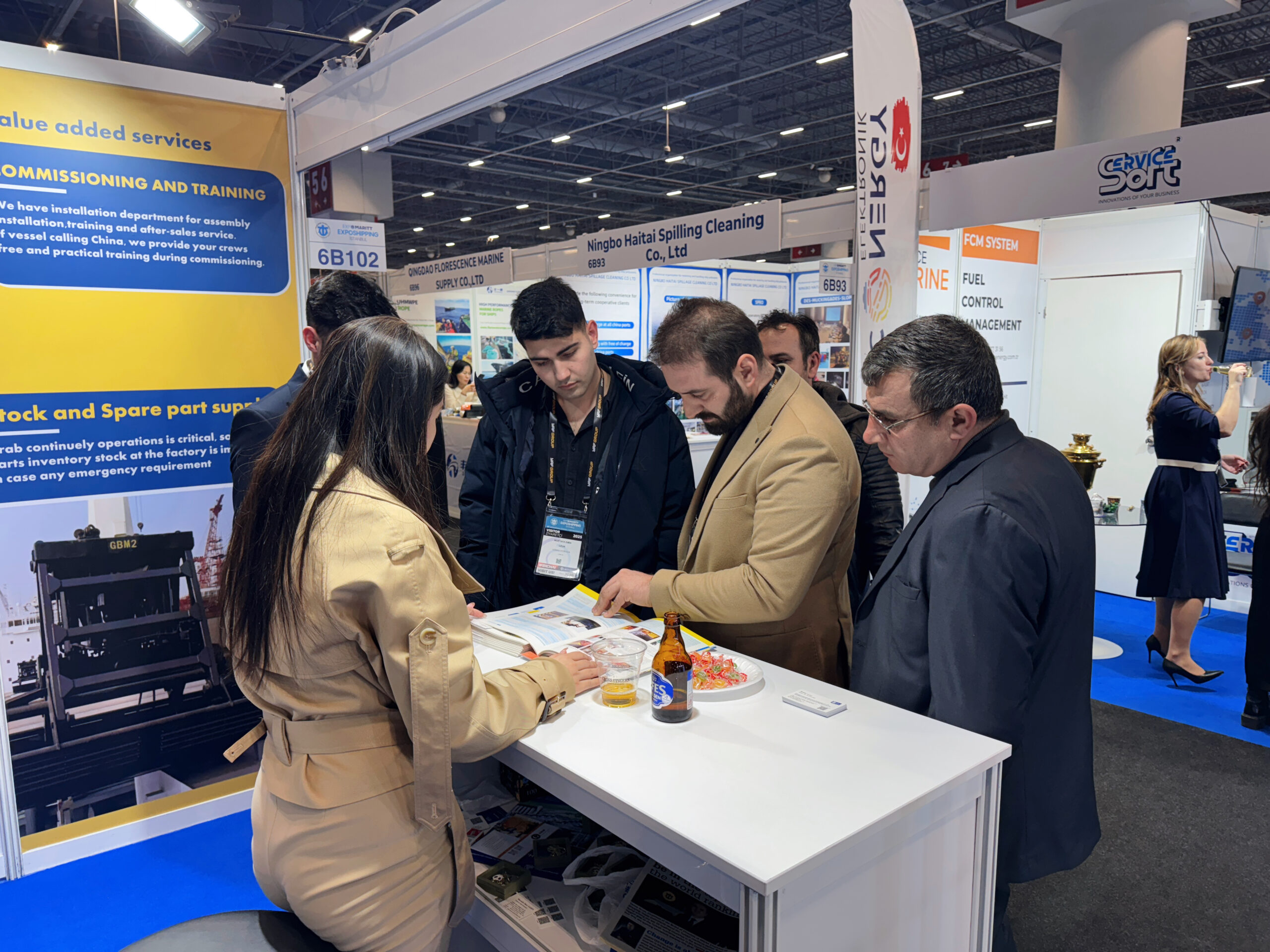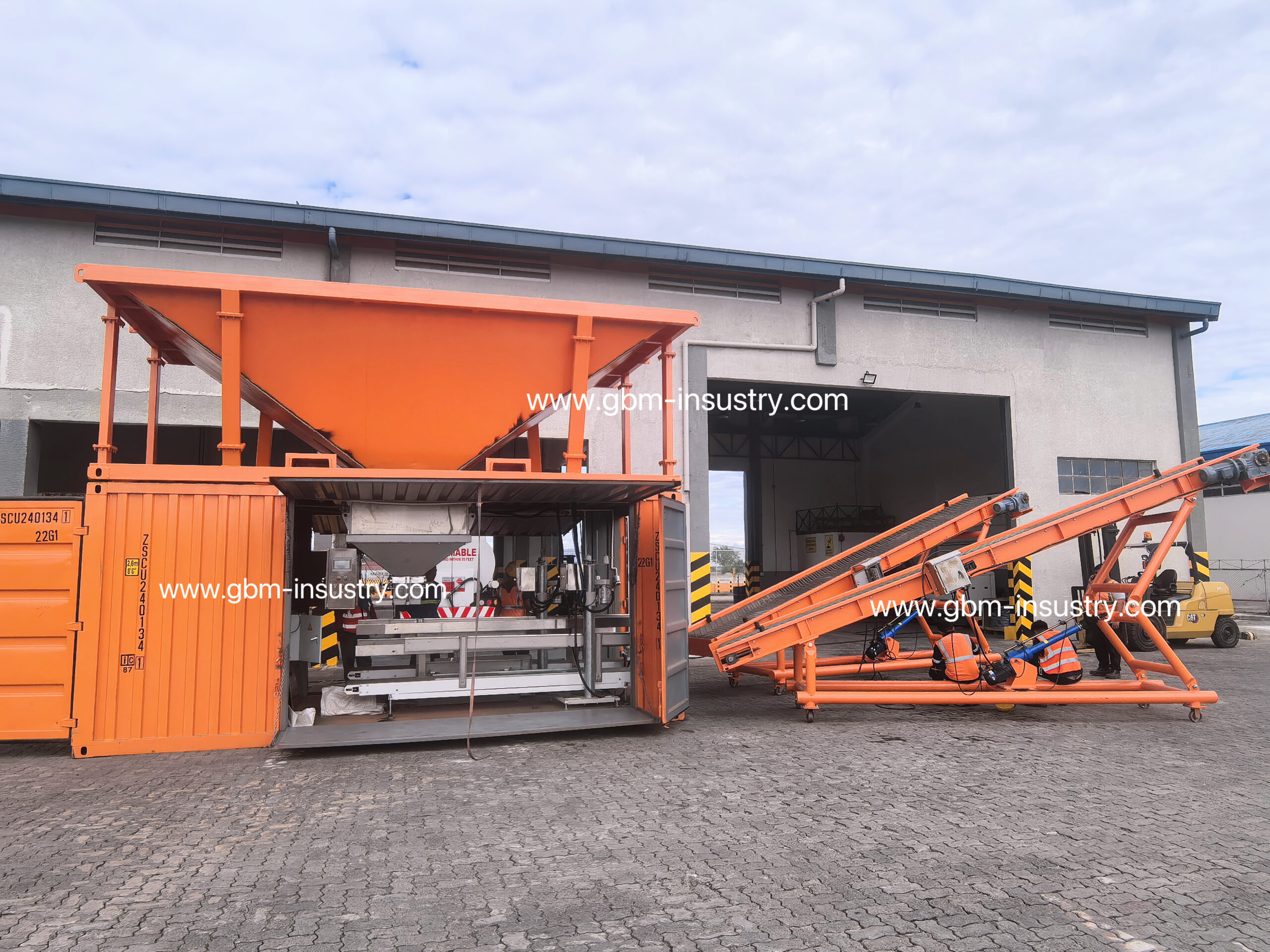Bulk cargo terminals are a crucial component of port logistics and a vital pillar of the national economy. According to statistics, China’s port bulk cargo throughput reached 1.5685 billion tonnes in 2022, accounting for nearly 40% of global bulk cargo throughput, with throughput volume ranking first in the world. However, with changes in economic development and social demand, bulk cargo terminals also face numerous challenges and issues. These issues not only impact the competitiveness and sustainable development capabilities of bulk cargo terminals but also constrain the high-quality development of port logistics and the national economy.
Therefore, traditional bulk cargo terminals urgently need to undergo process optimisation and transformation and upgrading to adapt to the requirements of the new era. New infrastructure provides traditional bulk cargo terminals with new concepts and opportunities. Through intelligent, digital, and green technologies, traditional bulk cargo terminals can achieve process optimisation and transformation and upgrading, thereby improving efficiency, reducing energy consumption and emissions, ensuring safety, and enhancing competitiveness.
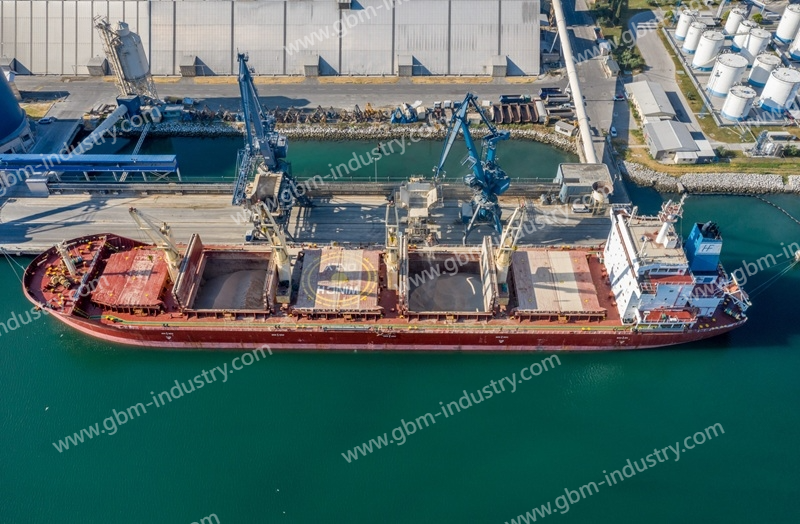
Impacts in Traditional Bulk Cargo Terminals
Low Efficiency
Traditional bulk cargo terminals suffer from low efficiency, primarily manifested in the following aspects.
(1) Poor performance of loading and unloading equipment. Due to factors such as high investment costs and slow updates, traditional bulk cargo terminals primarily use outdated or low-end equipment, such as grab cranes and conveyor belts. These devices suffer from issues such as slow operation speeds, low precision, poor stability, and susceptibility to damage.
(2) Disorganized yard management. Due to the lack of an effective yard management system, traditional bulk cargo terminals often rely on manual or simple management methods for their yards. This results in low yard space utilization, long internal transportation distances within the yard, and low operational efficiency.
(3) Outdated scheduling and command systems. Due to the absence of advanced scheduling and command systems and methods, traditional bulk cargo terminals primarily rely on manual or simple systems for scheduling and command. This leads to unscientific decision-making in scheduling and command, as well as unreasonable resource allocation.
(4) Poor coordination and collaboration. Due to the absence of effective coordination and collaboration mechanisms and platforms, traditional bulk cargo terminals lack effective communication and coordination between various operational phases. This results in frequent operational conflicts and delays.
Low efficiency has brought about numerous adverse effects on traditional bulk cargo terminals. First, it impacts customer satisfaction and market competitiveness. Due to prolonged operational times and poor service quality caused by low efficiency, customer satisfaction with port services decreases, and market share is eroded. Second, it affects cost-benefit ratios and economic efficiency. Low efficiency leads to high operational costs, reduced revenue, and lower profits. Finally, it affects resource utilization and social benefits. Low efficiency leads to resource waste, environmental pollution, and increased safety risks.
High energy consumption
Traditional bulk cargo terminals face high energy consumption issues, primarily manifested in the following aspects.
(1) High energy consumption of loading and unloading equipment. Traditional bulk cargo terminals primarily use fuel-powered handling equipment, which consumes significant amounts of energy during operations, such as diesel fuel consumption.
(2) High energy consumption in yard management. Due to the lack of effective yard management planning and methods, traditional bulk cargo terminals with manually managed yards face issues such as long internal transport distances and low yard operation efficiency, leading to increased energy consumption.
(3) High energy consumption in scheduling and command. Traditional bulk cargo terminals rely on manual or simple systems for dispatch and command, lacking advanced dispatch and command systems and methods. This results in poor information flow, unreasonable resource allocation, redundant operations, and ineffective transportation during operations, thereby increasing energy consumption.
(4) High energy consumption in coordination and cooperation. Traditional bulk cargo terminals lack effective communication and coordination between various operational phases, leading to operational workflow disruptions and severe delays, which increase energy consumption.
High energy consumption has brought about numerous adverse effects on traditional bulk cargo terminals: first, it affects cost-benefit ratios and economic efficiency, as high energy consumption leads to high operational costs, reduced revenue, and lower profits; second, it impacts carbon emissions and environmental protection, as high energy consumption results in significant carbon emissions and severe environmental pollution; third, it affects resource utilization rates and social benefits, as high energy consumption leads to resource waste, resource shortages, and reduced social benefits.
Poor environmental performance
Traditional bulk cargo terminals have poor environmental performance, primarily manifested in the following aspects:
(1) High emissions of pollutants. The loading and unloading equipment used in traditional bulk cargo terminals is primarily fuel-driven, emitting large amounts of CO2, nitrogen oxides, particulate matter, and other pollutants during operations, causing air pollution.
(2) High noise levels. The loading and unloading equipment used at traditional bulk cargo terminals is mostly mechanical or hydraulic, which generates a large amount of noise during operations, causing noise pollution.
(3) Dust dispersion. Due to the characteristics of bulk cargo itself, as well as the vibrations from loading and unloading equipment and transport vehicles, traditional bulk cargo terminals generate a large amount of dust during operations, causing dust pollution.
Poor environmental performance has brought about numerous adverse effects on traditional bulk cargo terminals: on one hand, it has impacted port image and social responsibility, as poor environmental performance has led to the deterioration of the surrounding environment, damaging the port’s image; on the other hand, it has hindered port development and policy support, as poor environmental performance has subjected ports to regulatory pressure from the government and public opinion, limiting port development and reducing policy support. Additionally, poor environmental performance has forced ports to invest more funds and manpower in environmental remediation and penalty mitigation, resulting in reduced port profitability and diminished competitiveness.
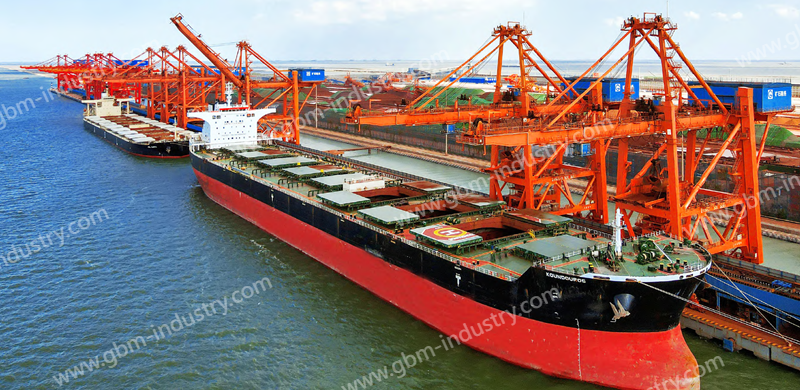
Objectives For Process Optimisation Traditional Bulk Cargo Terminals
In response to the issues and impacts of traditional bulk cargo terminals, the author proposes the following objectives for process optimisation and transformation:
(1) Improve efficiency. By introducing intelligent, digital, and automated technologies, enhance the performance of loading and unloading equipment, standardize yard management, improve the scientific nature of scheduling and command, and ensure smooth coordination and cooperation. This will optimize and improve operational processes, enhance operational efficiency and service quality, and meet customer needs and market competition.
(2) Reduce energy consumption. By adopting green, low-carbon, and energy-saving technologies, reduce energy consumption of handling equipment, resource waste in yard management, redundant operations in dispatch and command, and ineffective transportation in collaborative coordination. This will achieve energy conservation and emissions reduction in operational processes, lower operational costs and carbon emissions, and align with national policies and societal expectations.
(3) Improve environmental quality. By introducing clean, pollution-free, and noise-free technologies, reduce pollutant emissions from loading and unloading equipment, noise generated by yard management, and dust caused by dispatch and command operations. This will achieve clean and harmless operational processes, improve port environmental quality and image, and fulfil social responsibilities.
Pathways for Process Optimisation and Transformation
To achieve the goals of process optimisation and transformation for traditional bulk cargo terminals, the author proposes a smart renovation scheme for bulk cargo terminals based on integrated control and management, intelligent scheduling, and automated loading and unloading. This scheme primarily includes the following aspects.
(1) Integrated control and management. Establish a cloud-based control and management system platform that integrates functions such as data collection, information processing, resource scheduling, instruction issuance, and status feedback. This platform connects all aspects of the bulk cargo terminal (including berth management, loading and unloading management, yard management, gate management, etc.) and interfaces with external systems (such as vessel tracking systems and customer order systems). The platform can collect data in real-time from all operational phases for processing and analysis, and based on pre-set rules or manual intervention, perform resource scheduling and instruction issuance, while promptly providing status feedback from all operational phases to enhance control efficiency and effectiveness.
(2) Intelligent scheduling. By incorporating technologies such as artificial intelligence, big data analysis, and cloud computing, and using techniques like deep learning to analyse historical data, combined with real-time data for inference and prediction, the platform achieves intelligent functions such as the generation of bulk cargo terminal operation plans, intelligent allocation of operational resources, intelligent assignment of operational tasks, and intelligent handling of operational anomalies, thereby enhancing the scientific and flexible nature of scheduling. Ultimately, the following functions are realized: Based on vessel arrival times, vessel types, and vessel cargo weights, intelligently generate optimal operational plans for each vessel regarding berthing times, berthing berths, and berthing sequences; Based on yard space, cargo types, cargo quantities, and cargo destinations, intelligently generate optimal operational plans for each cargo batch regarding optimal storage locations, storage methods, and storage sequences within the yard; Based on the performance, status, and location of loading and unloading equipment, intelligently allocate optimal operational parameters for each piece of equipment, including optimal operational tasks, routes, and speeds; based on abnormal situations that arise during operations, such as vessel delays, equipment failures, or cargo changes, intelligently adjust operational plans and parameters, and promptly notify relevant personnel and equipment.
(3) Loading and unloading automation. By introducing unmanned machinery, remote control, and vehicle-road coordination technologies, achieve unmanned driving, unmanned operation, and unmanned monitoring functions for bulk cargo terminal loading and unloading equipment, thereby enhancing operational efficiency and safety.
Specific improve contents are as follows: Install unmanned machinery modules on grab cranes, utilizing visual recognition and lidar sensors to achieve automatic positioning, automatic grabbing, and automatic unloading functions for grab cranes; Installing remote control modules on grab cranes, utilizing 5G networks and the Beidou navigation system to achieve remote monitoring and remote operation of grab cranes; installing vehicle-road coordination modules on grab cranes, utilizing wireless communication and data exchange technologies to achieve information sharing and coordinated control between grab cranes and transport vehicles.
GBM Supports Terminal Process Optimisation
Facing the prominent challenges of traditional bulk cargo terminals in terms of efficiency, energy consumption, and environmental protection, as well as the urgent need for process optimisation and intelligent, green transformation, GBM, as a professional supplier of terminal handling equipment and technology, actively responds to industry changes and deeply integrates a series of innovative products into the modernization process of terminals, providing strong equipment support for improving operational efficiency, optimizing workflows, and protecting the terminal environment.
Leak-proof Grab: Enhancing Handling Efficiency and Environmental Protection
In traditional grab crane operations, issues such as material leakage and spillage not only result in material loss and increased cleaning costs but are also one of the primary sources of dust pollution at terminals.
GBM’s leak-proof grab buckets utilize advanced structural design and sealing technology to effectively address leakage issues during bulk cargo handling. This not only significantly improves handling efficiency (by reducing unnecessary repetitive actions and cleaning time) but also directly reduces dust generation during operations, significantly improving port air quality and strongly supporting the port’s ‘clean and pollution-free’ objectives.
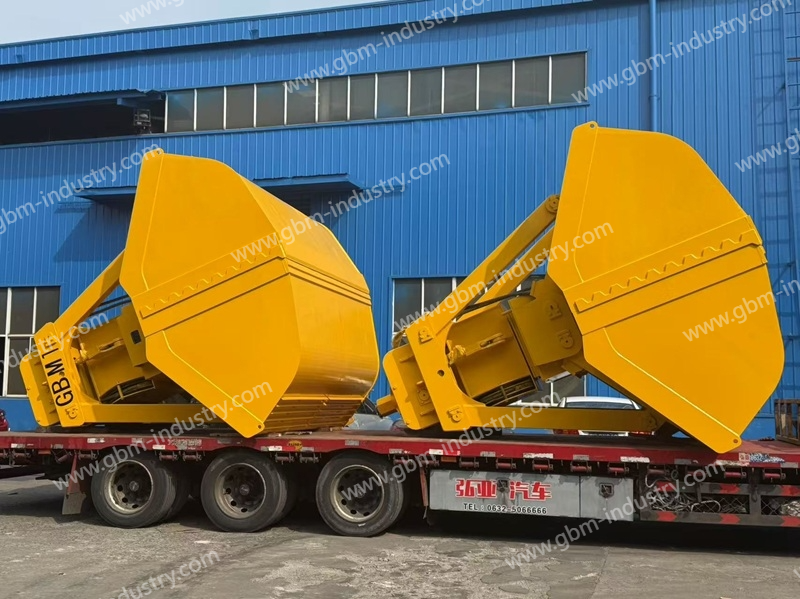
Dust Collection Chutes: Source Control of Dust Pollution
Dust dispersion is the core manifestation of poor environmental performance in traditional bulk cargo terminals. GBM’s dust collection chutes (such as dust-proof material guide chutes and dry fog dust suppression systems) are applied at critical points such as belt conveyor transfer points and loading/unloading of vehicles/ships.
These devices utilise physical enclosure and dry dust suppression technologies to effectively suppress dust generation and dispersion at the source of bulk cargo transfer. They are integrated with intelligent control systems, automatically adjusting operational parameters based on material characteristics and workload. This maximizes environmental quality while minimizing energy consumption, perfectly aligning with the terminal’s dual transformation goals of ‘improving environmental quality’ and ‘reducing energy consumption.
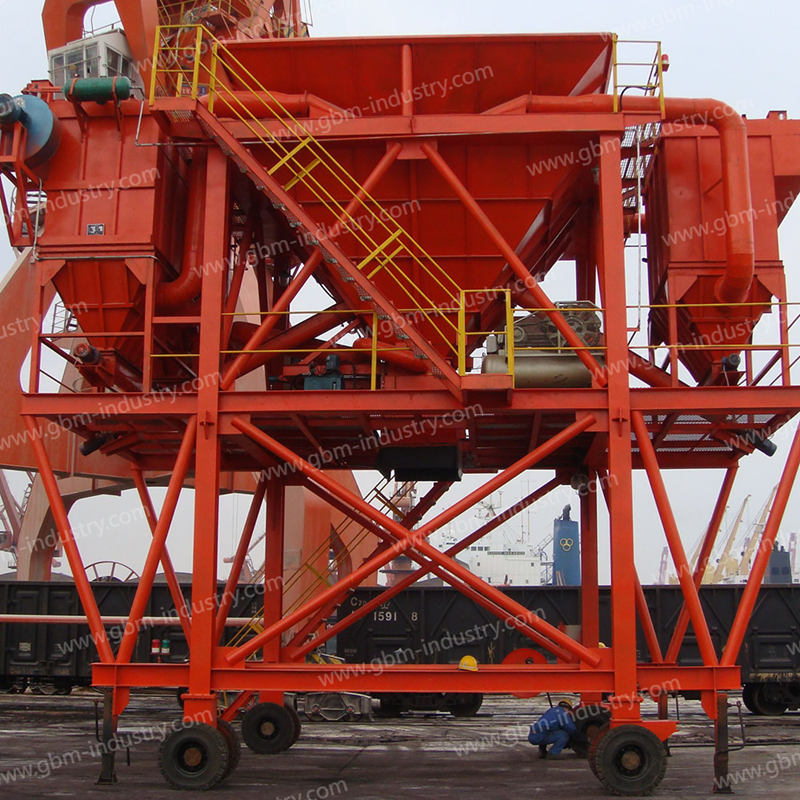
High-efficiency Ship Loaders: Key to Intelligence And Automation
Improving the performance of loading and unloading equipment is the core of achieving efficiency breakthroughs. GBM’s high-efficiency ship loaders (including intelligent upgrade and transformation solutions) integrate advanced technologies such as precise positioning, automatic control, and status monitoring.
These devices not only operate faster, with higher stability and better accuracy, solving the problems of ‘slow operation, low accuracy, and poor stability’ of old equipment, but are also key devices for achieving ‘loading and unloading automation.’ Their outstanding performance directly reduces vessel dwell time in port, increases berth turnover rates, and minimizes spillage and energy consumption through precise control. Some models also feature seamless integration with intelligent dispatch systems, making them an essential component of a ‘integrated control and intelligent dispatch’ system.
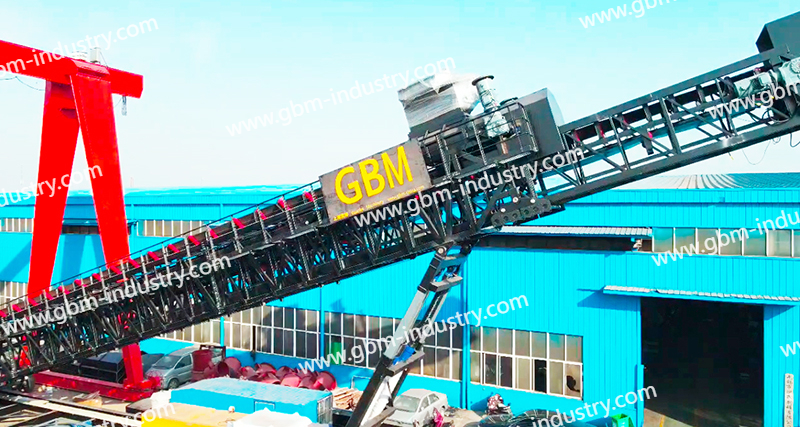
Summary
Traditional bulk cargo terminals face severe challenges in terms of efficiency, energy consumption, and environmental protection, which have become bottlenecks constraining their competitiveness and the high-quality development of port logistics. Leveraging the intelligent, digital, and green transformation driven by ‘new infrastructure,’ promoting profound process optimisation and transformation of traditional bulk cargo terminals is not only an inevitable requirement for adapting to the new era but also a key path to achieving cost reduction and efficiency improvement, energy conservation and emissions reduction, ensuring safety, and enhancing core competitiveness. Through the construction of a smart transformation plan featuring ‘integrated control, intelligent dispatching, and automated loading and unloading,’ terminals are expected to achieve revolutionary changes in their operational processes.
In this process, GBM is actively involved in the transformation of terminals with its innovative core products such as leak-proof grabs, dust removal hoppers, and high-efficiency ship loaders, providing practical equipment and technical solutions to solve efficiency pain points, reduce energy consumption, and improve environmental quality. In the future, with the continuous iteration and deepening application of technology, traditional bulk cargo terminals will inevitably enter a new phase of development characterized by greater efficiency, intelligence, environmental sustainability, and safety, providing stronger support for the prosperity and stability of the national economy and the global logistics supply chain.



